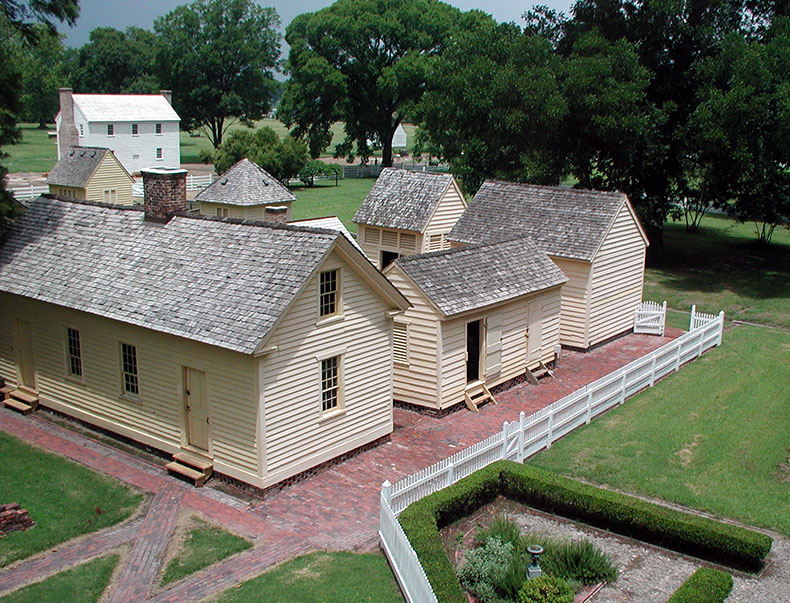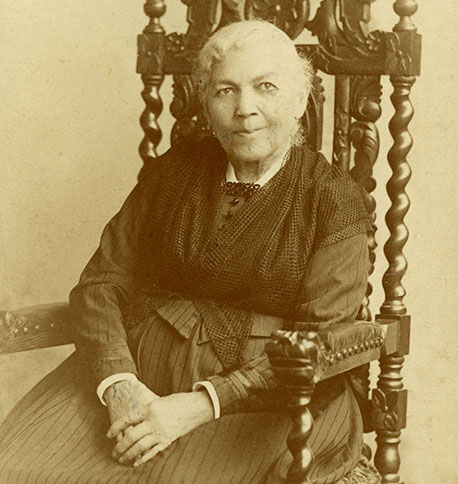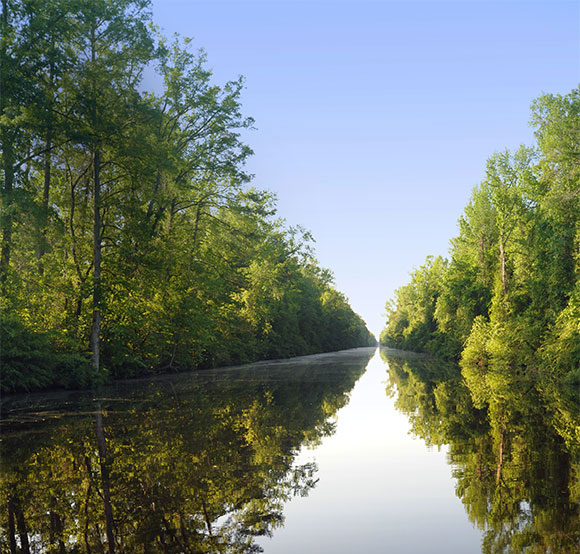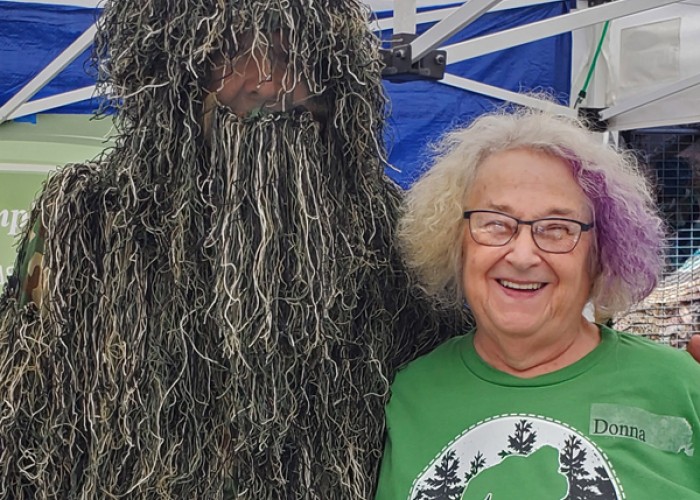Finding Freedom
The Network to Freedom trail includes several spots in NC
By Jessie LangNorth Carolina is well known for making history, whether that’s establishing the first public university, launching the first airplane flight or providing refuge for enslaved freedom seekers through the Underground Railroad system.
From the Piedmont to the coast, our state offers 20 iconic locations on the Network to Freedom national trail. Here are six key stops to learn more about the harrowing journey from enslavement to freedom.
1Somerset Place
2572 Lake Shore Road, Creswell
Near the coast, Somerset Place was one of North Carolina’s largest antebellum plantations with the state’s third-largest enslaved population on one property. Operating for 80 years, the plantation is near several other Network to Freedom sites on the coast.
2Colonial Park
101 West Water Street, Edenton
Fans of author Harriet Jacobs will love this site. Serving as the river network departure point for the Maritime Underground Railroad, the waterfront was developed by African American watermen who could arrange passage to northern states for fugitive slaves. Jacobs wrote of her 1842 escape by ship (under the pseudonym Linda Brent) in the 1861 classic “Incidents in the Life of a Slave Girl, Written by Herself.”
3Roanoke Island Freedom Colony Memorial Garden
1122 Fields Drive, Manteo
For history buffs, this location on the Network to Freedom Trail is especially significant to the Civil War. In the 1862 Battle of Roanoke Island, the Union seized control of the Outer Banks and used this location to provide protection for escaped slaves. Word spread quickly, and the number of escapees grew so much that the population required a camp for new arrivals. Due to wounds received fighting in the war, the treacherous journey and disease exposure, many freedom seekers died soon after arrival and were buried in mass graves within the grounds of the current Memorial Garden.
4Great Dismal Swamp
2294 U.S. 17 N., South Mills
Covering one million acres across North Carolina and Virginia, the Great Dismal Swamp was a route to freedom for many runaway slaves. Some purchased their freedom by working on the canal — the oldest continuously operating canal in the United States; some found refuge by living off the land (establishing “maroon communities”); and others used it as a stopping point on their way north while securing passage on a ship. The remote location and historical significance leave an impact on visitors to this site.
5Orange Street Landing Orange Street
On the Cape Fear River, Wilmington
A stop on the southern coast includes the site of underground railroad activity on the Cape Fear River. Vessels entering the port gave bondsmen access to those with abolitionist sympathies. A large escape in 1862 involved 22 slaves commandeering three sailboats. After rowing for 28 miles all night, they were rescued by Union ships and then enlisted into the Union Navy.
6Guilford College Woods and Snow Camp Historical Drama Society
Guilford College Campus, Greensboro, 301 Drama Rd., Snow Camp
In the Piedmont area, the Guilford College Woods tells the story of abolitionist Quakers who aided runaway slaves escaping to Indiana. To learn more about the Quaker efforts in the Underground Railroad, pair the trip with a visit to the Snow Camp Drama Society’s production of the “Pathway to Freedom” each July, which tells the story of the Quaker efforts in abolition.
Explore the trail through this interactive map.
About the Author
Jessie Lang is the 2023 editorial intern for Carolina Country.-
Go on a Carolina adventure
-
Share this story:








